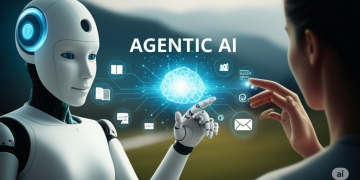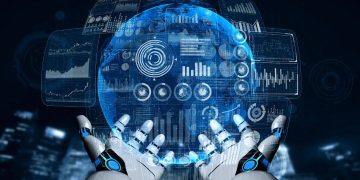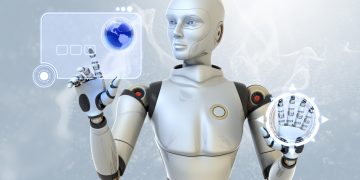The artificial intelligence (AI) industry is evolving at an unprecedented pace. From generative language models and autonomous systems to predictive analytics in healthcare and finance, AI is now deeply embedded in decision-making processes that affect billions of people. As the technology matures, so too does the urgency of a critical question: How can we balance innovation with ethics?
This is not a hypothetical concern. As AI capabilities grow, so do the risks—bias, surveillance, disinformation, labor displacement, and loss of agency, to name a few. Experts across academia, industry, and policy agree: navigating the tension between technical advancement and ethical responsibility is now central to the future of AI.
In this article, we explore how leading thinkers and researchers approach this challenge, what principles they believe should guide AI development, and how the balance between ethics and innovation might shape the global AI landscape in the years to come.
1. The Core Tension: Speed vs. Responsibility
One of the central dilemmas facing the AI community is the gap between technological acceleration and ethical readiness.
Researchers like Stuart Russell, professor of computer science at UC Berkeley and author of Human Compatible, argue that without deliberate safeguards, we risk building systems that may act in ways misaligned with human values.
“We are creating increasingly powerful AI systems, but we haven’t matched that progress with mechanisms to ensure those systems behave ethically or remain under meaningful human control.”
Similarly, Timnit Gebru, co-founder of the Distributed AI Research Institute (DAIR), warns that the rapid pace of deployment is outstripping our ability to assess harm. Her work emphasizes the importance of slowing down development when ethical questions remain unresolved—particularly when it comes to issues of bias, representation, and justice.
2. Embedding Ethics Into the Development Pipeline
One key consensus among experts is that ethics must not be treated as an afterthought or separate discipline, but rather as an integral part of the AI development process.
Margaret Mitchell, former co-lead of Google’s Ethical AI team, advocates for a “model card” system—similar to nutrition labels—that provides transparency about how models are trained, tested, and evaluated.
“We need processes that encourage teams to ask ethical questions at every stage—during data collection, model design, evaluation, and deployment.”
The idea is to shift from reactive approaches to proactive governance, building ethical frameworks directly into AI architecture, model documentation, and development tools.
3. The Role of Bias and Fairness
Bias in AI systems is one of the most visible and persistent ethical challenges. From facial recognition systems that misidentify people of color to algorithms that perpetuate gender stereotypes in hiring or lending, real-world harms are increasingly documented.
Experts argue that bias is not just a technical flaw—it reflects broader systemic inequalities embedded in the data, design, and goals of AI systems.
Joy Buolamwini, founder of the Algorithmic Justice League, calls for more inclusive data sets, broader participation in AI research, and stricter regulatory oversight.
“When those most affected by AI are excluded from its creation, the resulting systems can reinforce historical injustice at scale.”
The solution, experts argue, lies in greater diversity, rigorous bias auditing, and the creation of tools that enable public oversight and input.
4. Regulation, Standards, and Global Governance
With the rising influence of AI on economies, elections, and national security, experts are increasingly pushing for robust regulatory frameworks. While some industry leaders have resisted heavy-handed oversight, many researchers believe regulation is both necessary and overdue.
Yoshua Bengio, Turing Award winner and one of the pioneers of deep learning, advocates for a global AI governance framework—akin to climate or nuclear treaties—that addresses long-term risks and international cooperation.
The European Union’s AI Act is one of the most comprehensive efforts to date, aiming to classify AI systems based on risk and impose varying degrees of legal obligation. Experts generally welcome this approach but warn that implementation and enforcement remain critical.
5. Transparency and Explainability
A recurring theme among AI ethicists is the need for explainable and transparent models. As black-box algorithms increasingly guide decisions in criminal justice, education, finance, and healthcare, the lack of visibility into their decision-making processes undermines accountability.
Cynthia Rudin, a professor at Duke University, argues that in high-stakes domains, interpretable models should be preferred over complex black-box systems—even at the cost of slight reductions in performance.
“If you can’t explain it, you shouldn’t use it to make life-altering decisions.”
Efforts to improve interpretability include techniques like SHAP values, LIME, counterfactual reasoning, and inherently interpretable architectures.

6. Long-Term Risks: Alignment, Autonomy, and Control
While near-term harms are well documented, many experts are also deeply concerned about long-term risks—particularly related to autonomous AI systems that may act independently of human intent.
Eliezer Yudkowsky, a long-time AI safety researcher, has warned about the potential existential risks posed by advanced AI that becomes uncontrollable or misaligned. Though his views are considered extreme by some, they have helped catalyze interest in AI alignment research.
The AI alignment field seeks to ensure that as AI systems grow in capability, their objectives and behaviors remain aligned with human values—especially in scenarios where explicit control becomes difficult.
7. Ethical Innovation Is Still Innovation
Importantly, many experts emphasize that ethical constraints should not be seen as a barrier to progress, but as a way to ensure progress is sustainable and equitable.
Fei-Fei Li, co-director of the Stanford Institute for Human-Centered Artificial Intelligence (HAI), has been a strong proponent of designing AI with compassion, cultural awareness, and social responsibility.
“The future of AI must be shaped by not only technological expertise but also human wisdom and moral clarity.”
Indeed, there is growing interest in “ethics-as-a-service” models, open-source ethical toolkits, and impact assessments that help developers build responsible systems from the ground up.
Conclusion: A Future Built on Both Intelligence and Integrity
Balancing ethics and technology is not just a challenge—it is a defining test for the AI industry. Experts widely agree that innovation must proceed with an ethical foundation that includes transparency, fairness, accountability, and global cooperation.
As AI continues to shape the systems and societies of tomorrow, ethical reflection is not a luxury. It is a necessity. Only by embedding ethics into the heart of AI development can we ensure that its benefits are broadly shared—and that the future of intelligence is worthy of the trust we place in it.











































